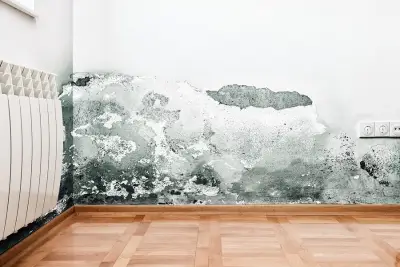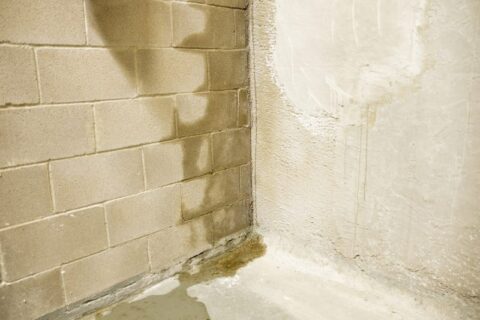Spotting the Symptoms of Mold Allergies at Home

Mold in your Maryland home can pose serious health risks to you and your family. Maryland homes can be the perfect breeding ground for mold due to the state’s humid climate, heavy rainfalls, and seasonal temperature changes. Mold thrives in damp and poorly ventilated areas, making basements, bathrooms, and attics particularly susceptible. Exposure to mold can lead to a variety of symptoms, including coughing, sneezing, irritated eyes, and more severe respiratory issues. If you or a loved one is experiencing unusual allergy-like symptoms or noticing a musty odor, it may be a sign of mold growth in your home, and taking action quickly is essential to protect your health and property. Contact Budget Basement Waterproofing today for professional mold remediation services.
Are Your Cold-Like Symptoms Actually a Sign of Mold Allergies?
One of the first signs of mold allergies can mimic those of a common cold. If you notice persistent sneezing, runny nose, postnasal drip, or itchy and watery eyes, these could be your body’s response to mold spores in your home. It’s important to remember that while these symptoms can be associated with a variety of allergens, the persistence of these symptoms, especially when colds are less common, can be indicative of mold exposure. The location can also be a telling sign. If these symptoms worsen or only appear when you’re at home, it’s a strong indicator that allergens in your home, potentially mold, are causing your discomfort.
Common Places for Mold Growth
Let’s take a closer look at where mold is commonly found to help you identify potential sources of mold in your home and take the necessary steps to prevent it from spreading. Common places for mold growth include:
- Bathrooms – Bathrooms are often exposed to moisture due to daily activities such as showering and using sinks. This makes them prime locations for mold growth, especially if they aren’t properly ventilated.
- Kitchens – Like bathrooms, kitchens also have high moisture levels due to cooking and cleaning activities. Mold can quickly grow on damp surfaces, such as countertops and under sinks.
- Basements – Basements tend to have poor ventilation and high humidity levels, making them another common area for mold growth. Water leaks or flooding can also contribute to mold growth in basements.
- Attics – Although attics may not seem like a typical place for mold growth, they can still be susceptible due to poor ventilation, trapped moisture, and roof leaks. Warm, humid air often rises into the attic and, without proper airflow, can create an environment for mold to thrive.
- Crawl Spaces – Crawl spaces are often dark, damp, and poorly ventilated. The lack of sunlight and airflow allows moisture to accumulate, while organic materials such as wood and insulation provide the perfect food source for mold growth.
- Laundry Rooms – Similar to bathrooms and kitchens, laundry rooms are frequently exposed to moisture from washing machines and dryers, making them a common place for mold to grow.
How Mold in Your Home Can Trigger Asthma Symptoms
Asthma can be triggered by various factors, with one common culprit being exposure to mold in the home. Even individuals without a prior diagnosis can develop mold-induced asthma, a type of allergic asthma caused by an immune response to mold spores. This condition can affect people of all ages, especially those with a history of allergies or sensitivities. Mold-induced asthma symptoms may include coughing, shortness of breath, and chest tightness, which can worsen with prolonged exposure.
How to Prevent Mold Growth
Preventing mold growth in the home is essential for maintaining a healthy living environment. Here are some steps you can take to prevent mold growth:
- Control Moisture Levels – Use dehumidifiers in damp areas like basements and bathrooms to keep humidity levels below 50%.
- Fix Leaks – If you have leaky pipes, roofs, or windows, fix them as soon as possible to prevent moisture buildup.
- Proper Ventilation – Make sure your home is properly ventilated, especially in areas prone to moisture, such as the bathroom and kitchen.
- Regular Cleaning – Regularly clean and inspect areas that are prone to mold growth, such as the shower, sink, and other damp areas.
- Use Mold-Resistant Materials – When renovating or building a home, use mold-resistant materials such as drywall with fiberglass instead of paper backing.
The Serious Health Risks of Mold Exposure
In some cases, mold exposure can cause more severe health reactions that go beyond common allergies. These can include symptoms such as fever, difficulty breathing, and skin rashes, which may worsen over time if exposure continues. In rare and extreme cases, mold can even lead to severe lung infections, posing a significant threat to respiratory health. People with weakened immune systems are especially at risk, including those undergoing cancer treatment, individuals with HIV, or anyone taking immune-suppressing medications. For these groups, even minor mold exposure can result in dangerous health complications. Because of these risks, it’s crucial to identify and address the mold source in your home promptly. Proper cleaning, ventilation, and, in some cases, professional mold remediation are necessary steps to prevent further exposure and safeguard your health.
Safe, Healthy, Mold-Free Living Starts Here
Don’t let mold compromise your home’s health, safety, and comfort. Not only does mold damage your property, but it also leads to serious health issues, including allergies, respiratory problems, and other long-term complications. If you suspect mold in your home—whether it’s visible growth, a musty odor, or unexplained symptoms—it’s time to take action. Our trained experts specialize in identifying and eliminating mold problems at the source. Using advanced tools and techniques, we thoroughly inspect your home, provide a clear diagnosis, and develop a customized solution to address your needs. With our help, you can restore a safe, healthy, and comfortable living environment for you and your loved ones. Don’t wait until your symptoms worsen. Contact us today for a thorough inspection and let us help you restore the comfort and safety of your home.

